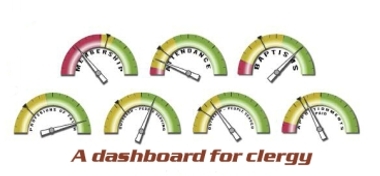
I am always surprised by how abruptly Will Willimon says goodbye: a quickly extended hand, a mumbled word offered while looking away, and a toddle off that looks more like a jog on tiptoes than a stride. This way of saying goodbye leaves an impression. He has someplace to be, and he's eager to get there.
Willimon has been busy during his seven years as a United Methodist bishop in Alabama. He has undermined the church's old boy system by appointing pastors to churches on the basis of congregational mission rather than the minister's years of service. And he has been a practitioner of what Leadership Education at Duke Divinity (www.faithandleadership.com) calls "traditioned innovation" — institutional leadership that neither attempts to create new models ex nihilo nor is enslaved to the past for its own sake. Rather, it draws treasures from tradition in creative new ways.
Take his conference's infamous clergy "dashboard," which was lampooned on The Huffington Post. The North Alabama Dashboard shows all the world, Sunday by Sunday, how many people attend worship at each church under Willimon's supervision, how many new professions of faith are made in each place, and how much outreach in mission is taking place, with growth (or decline) chartable over time. The dashboard has been mocked as a mainline version of church growth strategy — watering down the Gospel for the sake of bricks, butts, and budgets. A person might defend the new practice (as I have) by arguing that we count what we value, and each soul represented by a number is precious to God.
Yet I'm struck that this is not the way Willimon talks about the dashboard. Rather, he points out that John Wesley and the early Methodists counted attendance, professions of faith, and giving with an energy that might seem excessive today. He notes that in the Gospels and the Torah, crowds and talents and tribe members and converts are all counted with élan (if not precision). So the work of counting is a "traditioned" one.
Yet it is also innovative. Methodists have long collected data and stowed it away in filing cabinets. The innovation here is making those numbers public immediately. Other Methodist conferences are following North Alabama's example not only to offer an incentive to lethargic pastors, but so that those who are struggling can see which of their colleagues are doing well. They can call, ask what they're doing right, and shamelessly plagiarize their best ideas. In other words, the dashboard brings about community in surprising ways.
Willimon confessed to me that when he first deployed the dashboard, the pastors with the top numerical performance were people he himself did not know. So he called them up and said, "Hey, what are you doing out there in Dismal Swamp? Can we copy that here in Birmingham?"
And then, I'm sure, he said "Bye" and was gone. But now, when the time comes to make new clergy assignments, Willimon has more to go on than whether a pastor has a winning smile and the right personal connections. Not surprisingly, lay leaders now ask to see the dashboard figures of pastors being sent to them.
Willimon is constantly on the move. Perhaps that's because he thinks that's the best way to imitate a God who is also on the move - restless, working to reclaim his people through an institution that may have something of a future yet.